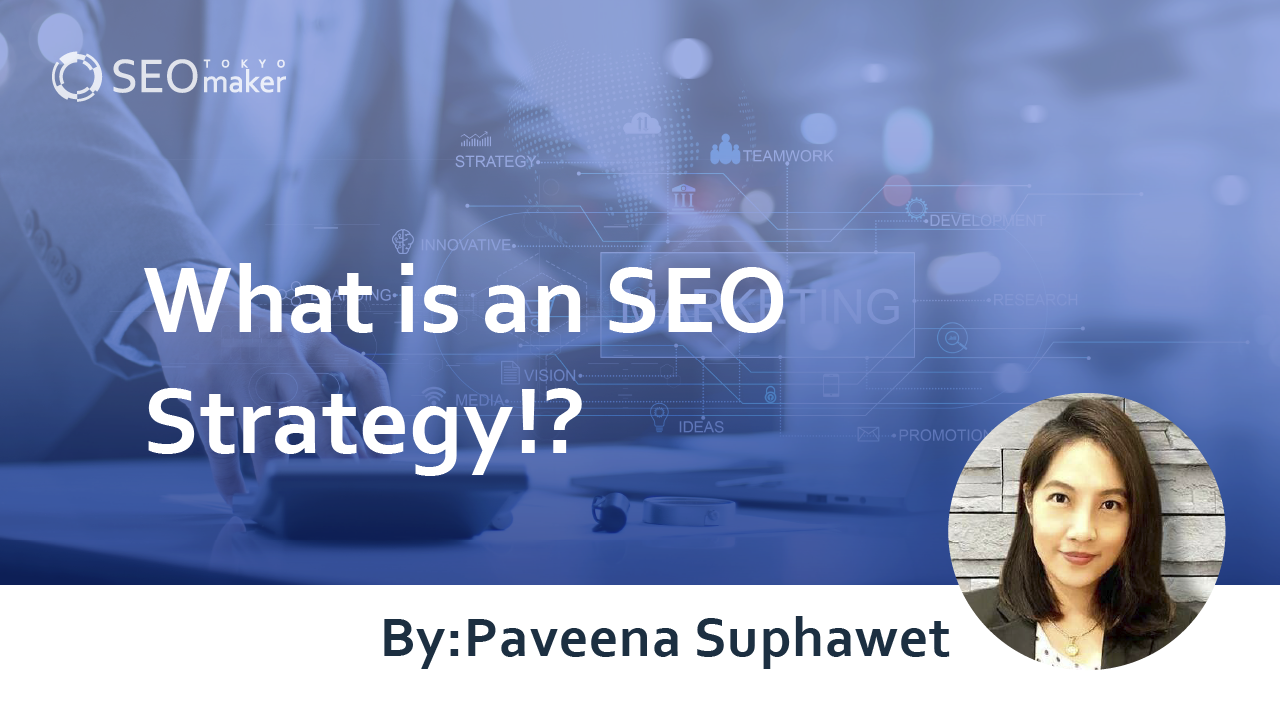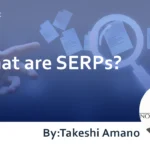What is an SEO Strategy!? Explaining Key Points for Effective Strategy Development
contents
- 1 What exactly is an SEO strategy?
- 2 The Background behind the Demand for SEO Strategy
- 3 Benefits of SEO Strategy
- 4 Drawbacks of SEO Strategy
- 5 How to Develop an SEO Strategy
- 6 Summary

Many web managers may find themselves grappling with the question, “I don’t know how to effectively implement SEO.”
Simply implementing SEO measures may not yield immediate visible results. To achieve effective SEO , it is essential to craft a meticulous strategy.
In this article, our SEO consultants will explain the key points for devising an effective SEO strategy.
What exactly is an SEO strategy?
Before SEO Strategy, Let’s Refresh Our Understanding of SEO.
SEO, short for “Search Engine Optimization,” is one of the techniques in web marketing that utilizes search engines such as Google and Yahoo.
In an SEO strategy, we strategically incorporate SEO to elevate relevant content to the top of search results. Being mindful of SEO strategy makes it easier to attract traffic by appearing higher in search results, facilitating promotion of companies or products to users who are searching, and ultimately provides a significant advantage in business.
Conversely, low search rankings result in decreased traffic, rendering web content meaningless.
To prevent this, an SEO strategy becomes crucial.
The Background behind the Demand for SEO Strategy
The need for SEO strategy arises from the remarkable evolution of SEO measures, making superficial SEO tactics less effective.
Google’s algorithms undergo regular updates, eliminating low-quality content. To survive in SEO, it is imperative to understand user search intent and consistently create high-quality content that provides appropriate answers.
To achieve this, executing SEO strategy correctly and establishing a foundation of high-quality content is essential.
Benefits of SEO Strategy
By formulating an SEO strategy, you can enjoy various benefits in terms of cost and attracting customers. The main benefits of an SEO strategy include the following.
– Offers long-term customer acquisition potential
-Cost-effective
-The more content accumulated, the more favorable it is for SEO
Expectation of Long-term Traffic Generation
Creating high-quality content through an SEO strategy makes it easier for articles to appear at the top of search results, especially when they receive high ratings from Google. Once an article appears in the top search results, it becomes easier to maintain that position unless there are significant updates from Google.
With a longer duration of being displayed in top search results, more visitors are likely to gather around the article, making it easier to sustain the results of business activities over the long term. An SEO strategy not only brings long-term traffic benefits but also supports long-term business operations.
Cost -effectiveness
Compared to performance-based advertising, SEO-based traffic generation incurs minimal costs.
Previously, attracting customers and promoting products required hefty advertising expenses and significant effort. However, with SEO, you can attract customers and promote products without spending much.
Once an article has undergone SEO strategy and appeared in top search results, it becomes easier to maintain that position without much additional effort. While there are initial costs involved in outsourcing articles or using external tools during the early stages of SEO, once completed, there is no need for additional outsourcing, thus eliminating additional labor costs. This makes SEO strategy highly cost-effective by reducing advertising and labor expenses.
Advantageous Accumulation of Content
SEO strategy aims for long-term business objectives. Accumulating high-quality content over the long term will give you an advantage in SEO.
Admittedly, in the initial stages when content is still being accumulated, websites may not be highly rated by search engines. However, by consistently creating high-quality content for users, the evaluation of the site will gradually improve.
Furthermore, articles implemented with an SEO strategy will continue to generate value for the company over the long term, becoming valuable corporate assets. The more high-quality content accumulates for users, the more advantageous it becomes in SEO, thus becoming valuable corporate assets.
Drawbacks of SEO Strategy
When considering an SEO strategy, it is important to recognize not only its benefits but also its drawbacks. Two main aspects constitute the disadvantages of SEO the time it takes for results to show and the establishment of a content creation framework.
-Takes time to see results
-Building a content creation system is challenging
Take Time to See Results
The foremost drawback of implementing an SEO strategy is the time it takes to see results.
As mentioned earlier, SEO strategies are geared towards long-term business goals. Results do not manifest immediately after creating content. Furthermore, a substantial amount of content needs to be accumulated. Consequently, in the initial stages, results may not match the effort invested, leading many to abandon their SEO strategies prematurely.
Considering that, it takes some time to see results, let us proceed with our SEO strategies with this expectation in mind.
Establishing a Content Creation Framework is Challenging
Another drawback of SEO strategy is the challenge of establishing a content creation framework. For a typical company, attempting SEO-conscious content creation abruptly is nearly impossible. This is because without the know-how of SEO strategies, it is difficult to produce high-quality content, including crafting articles, selecting keywords, and acquiring backlinks.
>>Strong SEO Content Creation Methods: From Keyword Selection to Writing
To address this, it is necessary to either outsource content creation or establish a specialized department within the company for SEO strategy. This process entails additional costs, personnel rearrangements, and unexpected issues, making the framework establishment a challenging task.
Nevertheless, once the framework is in place, it’s just a matter of operating it smoothly. Let us view the setup of a content creation framework as the initial hurdle in SEO strategy implementation and move forward accordingly.
How to Develop an SEO Strategy
Now, let us delve into the actual process of crafting an SEO strategy. When devising an SEO strategy, there are four key points to keep in mind.
-Clarifying the Value of Our Services
-Defining the Target (Persona)
-Setting the Customer Journey
-Understanding the Key Points of Valued Content
Clarify the Value of Your Company’s Services
First and foremost, let’s clarify the value of your company’s services. Consider what value your services can provide to users.
Understanding the value of your company’s services is crucial for creating high-quality content. In fact, it forms the foundation of your SEO strategy. Once you have defined the value of your company’s services, the next step is to create a content map.
Optimizing Site Structure with a Content Map
A content map is a visual representation of your content , mapping out the relationships and the content itself. This aids in optimizing site structure.
When creating a content map, it’s advisable to use mind mapping tools. Tools that present content in a hierarchical tree structure are particularly recommended for visualizing the flow of content.
Use the mind map to break down larger keywords into smaller ones and group similar keywords to prevent content duplication. It is also important to create a site structure that is user-friendly.
By comprehensively analyzing listing information in the content map and improving the relationships between content pieces, you’ll likely receive higher evaluations from search engines, making it easier to appear in top search results.
Define Your Target Audience (Persona) .
Next, let us define your target audience. Incorrect target setting can result in irrelevant content, so proceed with caution.
Identifying User Segments
In SEO strategy, we segment our target into two groups to clearly define our aim.
The first group consists of users with evident needs who are likely to make purchases soon ( active users ) and those who have latent needs but could become customers in the future ( potential users ).
Active users are actively seeking solutions to their problems or concerns and are more likely to convert into sales immediately.
On the other hand, potential users are less inclined to adopt a service immediately but have interests or concerns related to the industry. While monetizing potential users immediately may be challenging, it’s crucial to engage them for long-term gains. Segment your target based on user attributes and their needs.
Setting up Personas
Once you have segmented your target into active and potential users, you will create personas (user profiles) to transform your target into more realistic representations.
In personas, you will finely detail characteristics such as age, gender, occupation, family structure, etc., creating a detailed profile of the individuals who would become your customers.
By further segmenting your target, you will sharpen user needs, making it easier for your content to resonate with them.
Essentially, aligning your company’s content with customer needs increases the likelihood of receiving positive evaluations from search engines. Therefore, it’s crucial to establish personas as part of your SEO strategy.
Setting Up Customer Journey
Even with personas in place to clarify user needs, not all users will automatically think, “I want to use this company’s services.”
As users visit your content, you’ll need mechanisms in place to make them aware of your services and entice them to consider using them.
The journey users take from discovering your service to considering a purchase or sign-up is referred to as the “customer journey” in marketing.
Designing the Path from Traffic to Conversion
In the customer journey, four main phases are typically outlined.
-Awareness
-Interest
-Consideration
-Purchase
These phases represent the psychological progression from awareness to purchase. Let’s examine how users flow from initial contact to conversion.
Awareness
Awareness is the stage where users become acquainted with your service. At this point, users are unaware of your company but are searching for content that addresses their problems or concerns.
During the awareness phase, presenting solutions to users’ problems and concerns through your content, while also showcasing your company’s appeal, can facilitate the transition to the next step: “Interest.”
Interest
Interest is the stage where users who visit your company’s content are introduced to your services and are encouraged to understand them better. It’s crucial to illustrate how your services can address customers’ problems or concerns, using case studies to help them envision a future where their issues are resolved.
Comparison and Consideration
Comparison and consideration occur when users who have learned about the merits of your service start to compare it with offerings from other companies. By enabling users to compare your service with others within your content, you can prevent them from leaving. Utilize the value proposition of your service while juxtaposing it with competitors.
Purchase
The final stage, purchase, is when users who have completed their comparisons search for your brand name to make a purchase or sign up. To increase conversion rates, consider implementing strategies like Landing Page Optimization (LPO) or Email Follow-Up (EFO). Additionally, providing discounts or coupons, especially in e-commerce, can facilitate conversions.
Visualize the four phases set in the customer journey and organize and describe corresponding content accordingly. Aim to guide users to the next phase by understanding their psychological state.
Key Points for Content Evaluation
Once you’ve determined the content to be created for each phase, the next step is to incorporate it into your website.
When integrating content onto your site, it’s crucial to ensure it meets certain criteria for being evaluated positively. Specifically, consider the following three points
-Ensuring high-quality pages that uphold EAT (Expertise, Authoritativeness, Trustworthiness)
-Crafting articles that fulfill search intent
-Implementing fundamental SEO practices
Let us delve into each of these points.
Ensuring High-Quality Pages Upholding E.A.T.
Verify that your content maintains EAT standards. EAT refers to Expertise, Authoritativeness, and Trustworthiness , as outlined in Google’s “Quality Rater Guidelines,” which serve as indicators for site evaluation by Google.
Since Google relies on these guidelines for evaluating sites, ensuring E-A-T is critical for appearing in top search results.
Crafting Content to Meet Search Intent
A critical aspect of SEO strategy is to provide information that satisfies the search needs of your target audience.
No matter how clear your company’s value proposition or target audience is, if your content does not meet search needs, users will navigate away from your site.
Moreover, if there is a high bounce rate from your site, search engines may deem it as having “low-quality pages,” causing your search ranking to drop. Meeting search intent is especially crucial in SEO strategy.
Implementing Basic SEO Practices
While improving content quality is essential, don’t forget about implementing basic SEO practices.
For instance, consider the following strategies.
- Including keywords in title tags and headings
- Utilizing keyword co-occurrence
- Linking to related content and receiving links from related content
These are fundamental measures, but they are crucial for increasing visibility on search engines.
SEO practices have evolved significantly, making superficial SEO tactics less effective. That is why it’s essential to strategically approach SEO to ensure it effectively supports your business activities.
Additionally, when devising an SEO strategy, it’s an opportunity to reassess your company’s services and redefine your target audience.
Summary
For those struggling with SEO consulting or strategy, I encourage you to use this article as a reference and aim to monetize your web content. Tokyo SEO Maker offers comprehensive SEO strategies, including keyword strategies, content strategies, and methods for nurturing and monetizing websites. For more details, please do not hesitate to contact us.
Top of Form










![What is a Description? Explaining the Meaning, Writing Style, and Changing Word Count – [2023 Edition]](https://www.switchitmaker2.com/en/wp-content/uploads/2024/09/what-is-description.webp)










